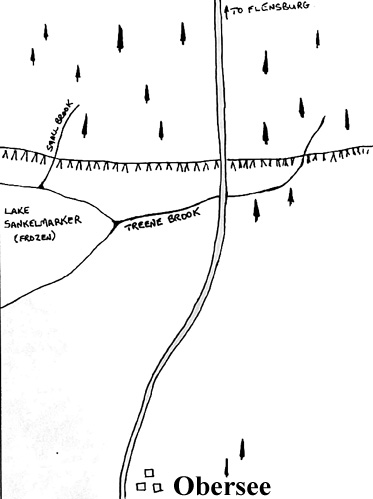Historically, rearguard operations usually indicate that one side is in serious trouble. Some famous rearguard actions include the Sicilian gunners at the Battle of Adowa and the British retreat from Kabul during the first Afghan War. Following the Austrian defeat at Magenta during the 1859 Italian War, the Austrian artillery held off the French Army at Melegnano while the Austrian Line fell back across the river Mincio.
In a miniatures war game, the objective of the commander of the rearguard is to screen the retreat of the main army. In the mid-to-late 19th century, rearguards are usually conducted at divisional level. Conducting a successful rearguard action is considered by many to be the second most difficult type of wargame scenario (the most difficult, according to our historical consultant, R.H. Cassidy, being that of the amphibious assault.)
One of the cardinal rules of a successful rearguard action is never become too involved in fighting. Many wargamers become fixated on "giving as good as they get", and this will usually result in them overexposing their troops to unnecessary casualties. It often suffices to simply keep the enemy off balance, while your march columns beat feet off the board edge. Therefore, a light touch coupled with good timing and the ability to back down from a fight is required.
For the attacker, the objective is usually to get by the defender, although not at the cost of ignoring the enemy. The attacking player must keep an eye on any time limit, while maintaining his force's effectivness for pursuit.
What follows is a small scale rearguard scenario based on an actual battle from the Second Schleswig War.
Obersee, 6 Feb. 1864: Second Schleswig War
The Danish army, falling back on the fortified town of Flensburg, leaves a small rearguard on the road from Obersee (Overso). An Austrian brigade, advancing along the line of the road and Treene brook, attempts to break through.
Danes: Col. Max Muller
- 1st Infantry Regt. 2 battalions
11th Infantry Regt. 2 battalions
Field Artillery, rifled 4# guns 1 section
Austrians: Maj. Gen. Nostitz
Third Infantry Brigade
- 9th Jagers 1 battalion
14th Grand Duke of Hesse Infantry 2 battalions
27th King of Belgium Infantry 2 battalions
1/4th Foot Artillery 4 sections*
Attached troops:
- 9th Lichtenstein Hussars 5 squadrons
* The Austrian artillery does not appear to have played an important part in this action (indeed, may not have been present at all), and should be left out, unless used to balance out a weak player. It is included for the sake of completion.
Setup:
Danes set up north of the stream (Treene). They must prevent the Austrians from exiting the north board edge for 18 turns (4-5 simulated hours.)
Austrians enter anywhere along south board edge, including road. Must use column to gain road movement. Austrians must exit north board edge by end of turn 18 to win.
Terrain:
The raised area on the northern portion of the map is covered with light woods. The lake and stream are frozen: they may be crossed but any units doing so are disordered and lose half movement. The road has clear terrain of one inch (50-60 yards) on either of its sides.
Tactical Notes:
In playtesting this scenario, we used Grand Bataille, Grand Victoire. One has to give credit to Col. Muller's eye for a defensive position: the Austrians had a devil of a time breaching the position. In the first playtest session, the Danish player fell into the trap of trying to stop the Austrians in their tracks as opposed to merely delaying them: the Danes took massive casualties from melee.
Map

Back to Clash of Empires No. 2 Table of Contents
Back to Clash of Empires List of Issues
Back to Master Magazine List
© Copyright 1997 by Keith Frye
This article appears in MagWeb (Magazine Web) on the Internet World Wide Web.
Other military history articles and gaming articles are available at http://www.magweb.com